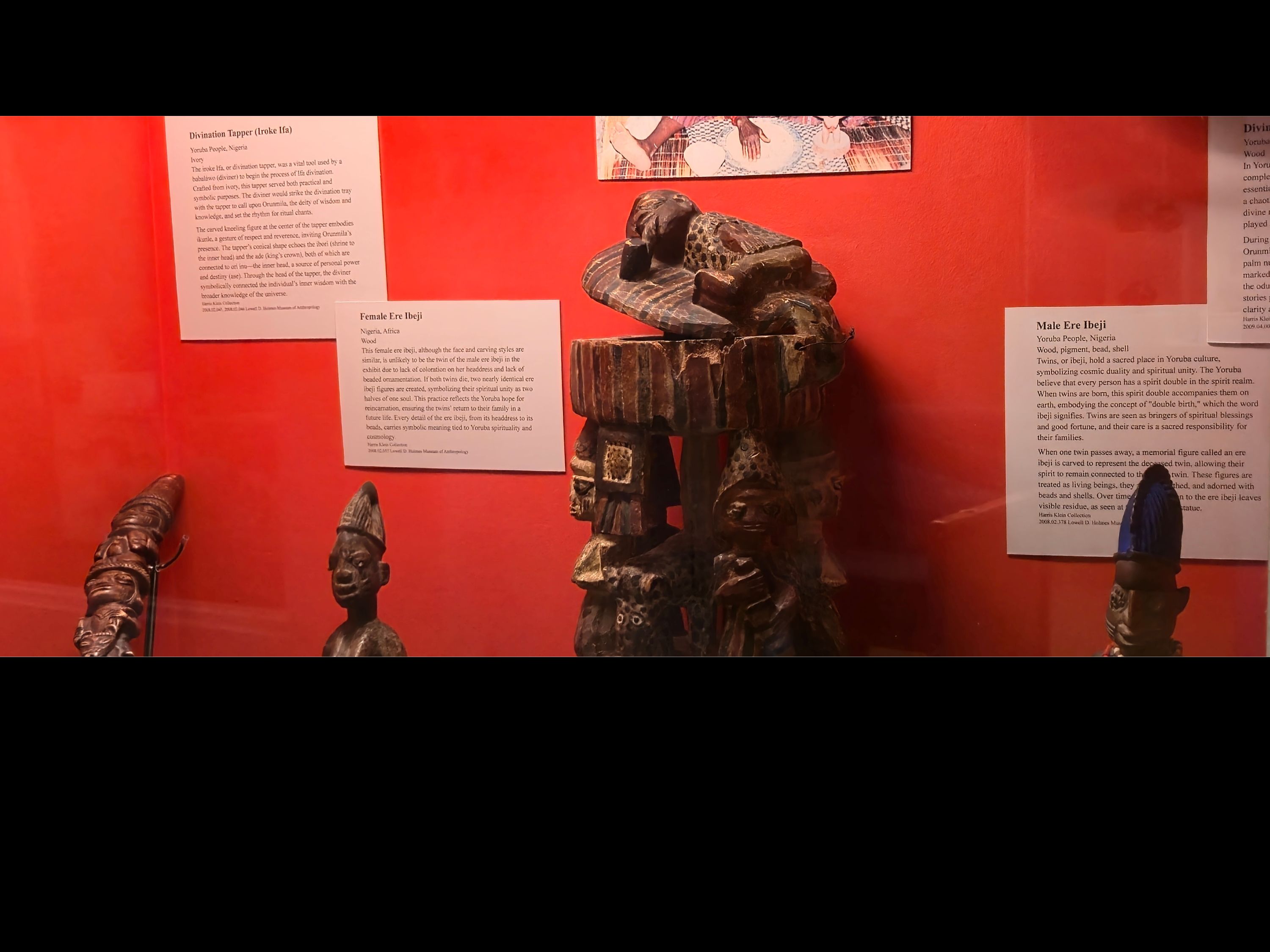The Art of Death and Mysticism
Across cultures and centuries, humanity has sought to understand and navigate the mysteries of death, the unseen forces that shape existence, and the sacred act of hunting. Art and ritual objects serve as bridges between the physical and spiritual realms. These creations are more than functional; they are imbued with meaning, symbolizing protection, guidance, the cyclical nature of life and death, and the balance between humanity and nature.
Each artifact tells a story of belief and reverence. Divination tools provide wisdom to face the unknown, twin statues honor sacred bonds transcending mortality, and ritual garments like hunter fetish shirts offer spiritual protection in life and beyond. Hunting tools and adornments reflect the deep connection between survival, respect for life taken, and the spiritual forces that govern the natural world. These objects remind us that through art, humanity explores the profound questions of existence, forging connections to the divine, the ancestral, and the eternal.
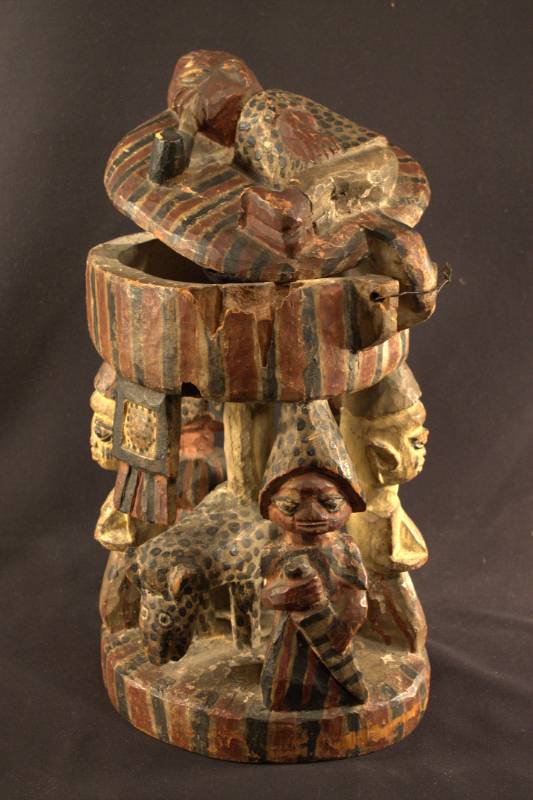
Divination Bowl
Yoruba People, Nigeria
Wood, pigment, metal
This intricately carved bowl was used in Ifa divination rituals, a practice central to Yoruba spirituality. Ifa divination seeks to provide guidance on life’s profound questions, helping individuals navigate important moments such as marriages, childbirth, and naming ceremonies. The rituals were conducted by a babalawo (priest), who sought advice from the orisas (deities) and ancestral spirits.
The figures adorning the bowl, including men, women, and a spotted leopard, symbolize the interconnectedness of humanity and nature. The leopard, revered for its strength and agility, reflects the deep respect for animals that thrive in the jungle and grasslands of Africa. The man depicted with a pipe on the lid suggests the integration of other ceremonial tools in the divination process.
Such objects not only served spiritual purposes but also exemplified the artistic excellence of Yoruba carvers, who skillfully merged function and symbolism in their creations.
Harris Klein Collection
2008.02.060a and 2008.02.060b Lowell D. Holmes Museum of Anthropology
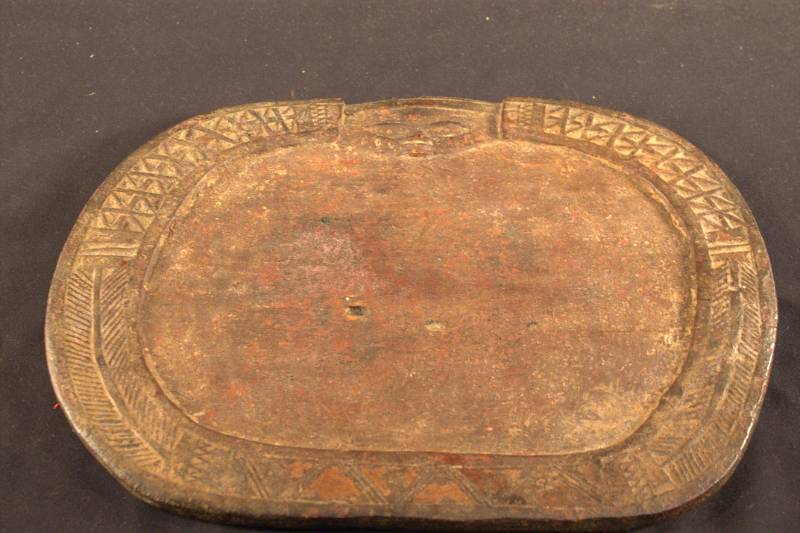
Divination Tray (Opon Ifa)
Yoruba People, Nigeria
Wood
In Yoruba spirituality, storytelling is key to understanding life’s complexities. This divination tray, known as an opon Ifa, was an essential tool used in Ifa divination to bring order and insight to a chaotic world. Adorned with the face of Eshu Elegba, the divine messenger and guardian of balance and chaos, the tray played a central role in rituals seeking wisdom and guidance.
During a divination session, a babalawo (priest) would invoke Orunmila, the deity of wisdom, and interpret patterns formed by palm nuts or a chain of seed shell halves. The results were marked as lines on the tray, each corresponding to verses from the odu Ifa, a vast collection of Yoruba spiritual literature. These stories provided answers to life’s pressing questions, offering clarity and solutions.
Harris Klein Collection
2009.04.008 Lowell D. Holmes Museum of Anthropology
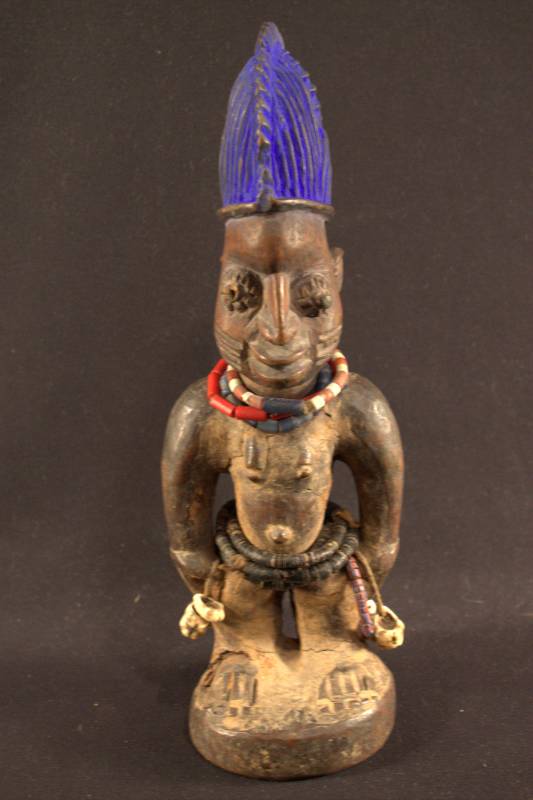
Male Ere Ibeji
Yoruba People, Nigeria
Wood, pigment, bead, shell
Wood, pigment, bead, shell
Twins, or ibeji, hold a sacred place in Yoruba culture, symbolizing cosmic duality and spiritual unity. The Yoruba believe that every person has a spirit double in the spirit realm. When twins are born, this spirit double accompanies them on earth, embodying the concept of "double birth," which the word ibeji signifies. Twins are seen as bringers of spiritual blessings and good fortune, and their care is a sacred responsibility for their families.
When one twin passes away, a memorial figure called an ere ibeji is carved to represent the deceased twin, allowing their spirit to remain connected to the living twin. These figures are treated as living beings, they are fed, bathed, and adorned with beads and shells. Over time, the care given to the ere ibeji leaves visible residue, as seen at the base of this statue.
Harris Klein Collection
2008.02.378 Lowell D. Holmes Museum of Anthropology
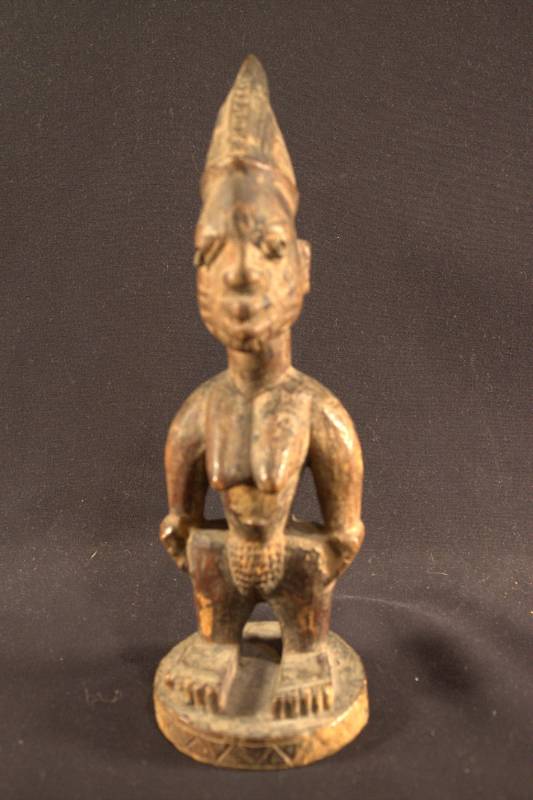
Female Ere Ibeji
Nigeria, Africa
Wood
This female ere ibeji, although the face and carving styles are similar, is unlikely to be the twin of the male ere ibeji in the exhibit due to lack of coloration on her headdress and lack of beaded ornamentation. If both twins die, two nearly identical ere ibeji figures are created, symbolizing their spiritual unity as two halves of one soul. This practice reflects the Yoruba hope for reincarnation, ensuring the twins’ return to their family in a future life. Every detail of the ere ibeji, from its headdress to its beads, carries symbolic meaning tied to Yoruba spirituality and cosmology.
Harris Klein Collection
2008.02.055 Lowell D. Holmes Museum of Anthropology
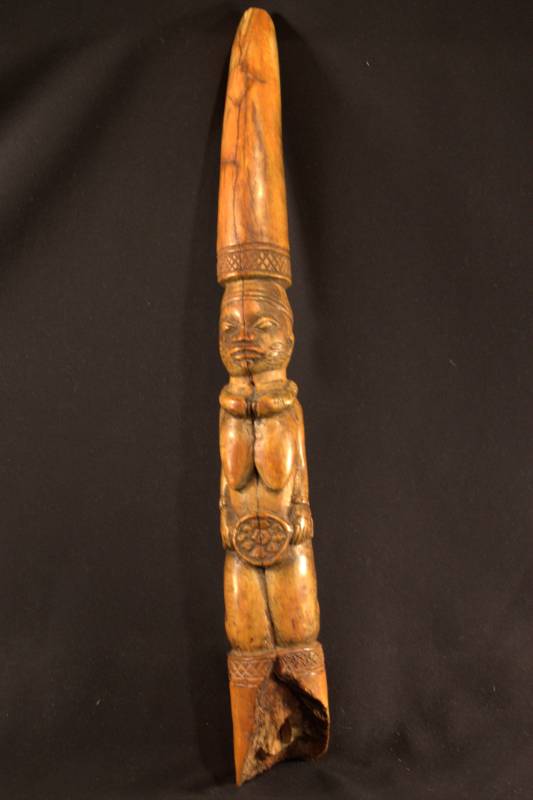
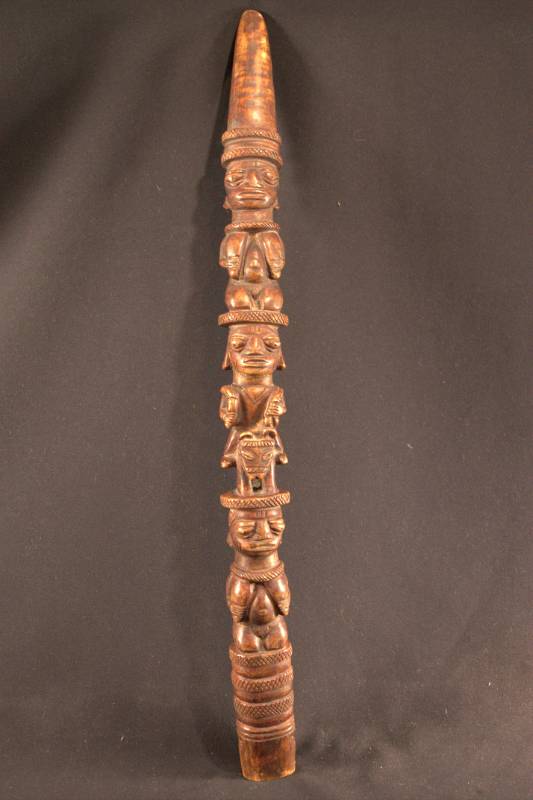
Divination Tapper (Iroke Ifa)
Yoruba People, Nigeria
Ivory
The iroke Ifa, or divination tapper, was a vital tool used by a babaláwo (diviner) to begin the process of Ifa divination. Crafted from ivory, this tapper served both practical and symbolic purposes. The diviner would strike the divination tray with the tapper to call upon Orunmila, the deity of wisdom and knowledge, and set the rhythm for ritual chants.
The carved kneeling figure at the center of the tapper embodies ikunle, a gesture of respect and reverence, inviting Orunmila’s presence. The tapper’s conical shape echoes the ibori (shrine to the inner head) and the ade (king’s crown), both of which are connected to ori inu—the inner head, a source of personal power and destiny (ase). Through the head of the tapper, the diviner symbolically connected the individual’s inner wisdom with the broader knowledge of the universe.
Harris Klein Collection
2008.02.045, 2008.02.046 Lowell D. Holmes Museum of Anthropology
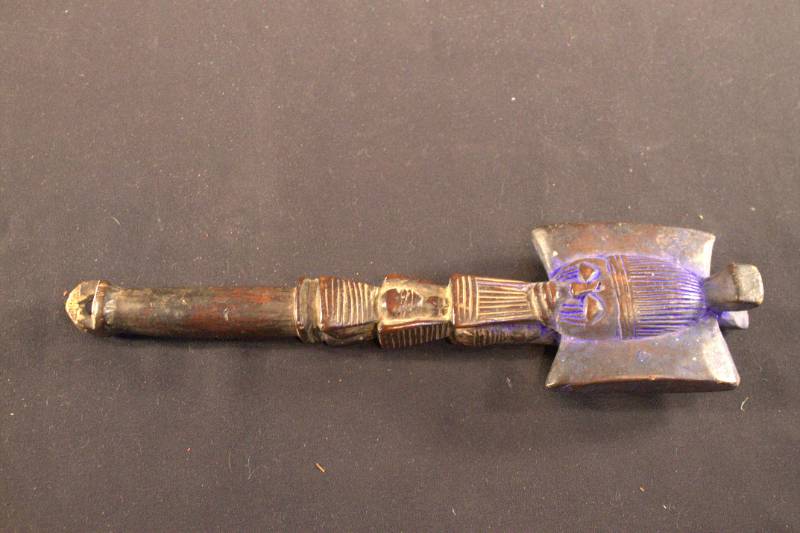
Dance Wand (Ose Shango)
Yoruba People, Nigeria
Wood, pigment
This dance wand, known as an ose Shango, is a ceremonial object associated with Shango, the Yoruba orisa (deity) of thunder, lightning, and justice. The double-headed axe motif symbolizes Shango’s power and authority, representing balance, strength, and the duality of his fiery nature.
Harris Klein Collection
2008.02.040 Lowell D. Holmes Museum of Anthropology
Return To Echoes of Expression: A Cultural Symbolism Collective


